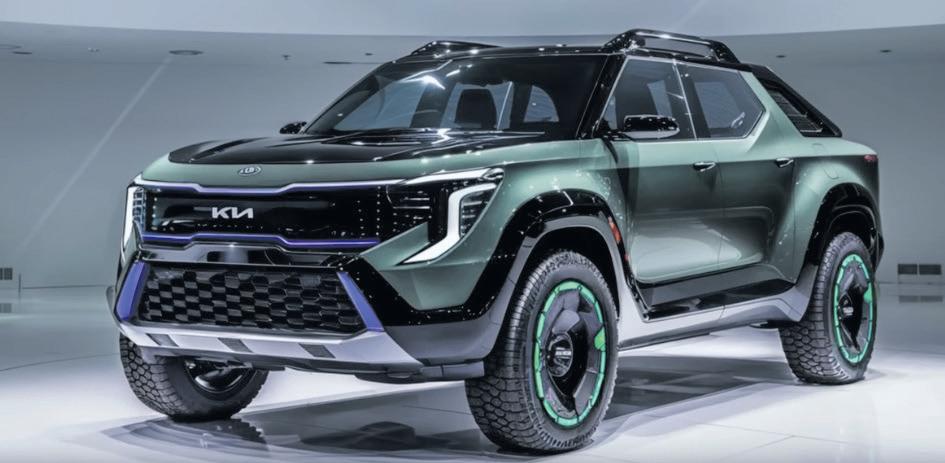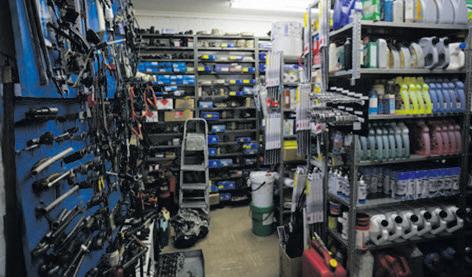
3 minute read
Kia Unveils Tasman: Dual-Cab Ute Set to Redefne the Market
By Jeff Gibbs
Kia’s much-anticipated entry into the dual-cab ute market has been confrmed, with the unveiling of the all-new Kia Tasman. Drawing its name from the expansive Tasman Sea that stretches between Australia and New Zealand, this robust vehicle is poised to make a signifcant impact in the competitive landscape of utility vehicles. With a slated arrival in 2025, the Tasman aims to capture the attention of discerning customers, pitting itself against formidable rivals like the Toyota HiLux, Ford Ranger, and Isuzu D-Max.
Under the hood, the 2025 Kia Tasman is expected to pack a punch with its engine options. While offcial specifcations are yet to be disclosed, industry speculation suggests a 2.2-litre turbo diesel powertrain paired with an eight-speed automatic transmission. This engine, known as the ‘Smartstream’ unit, currently powers esteemed models like the
Hyundai Santa Fe and Kia Sorento, promising robust performance with outputs of 148kW/440Nm. Additionally, the possibility of a 3.0-litre inline six-cylinder turbo diesel, akin to the one found in the Genesis GV80 SUV, presents an enticing prospect for enthusiasts seeking even more power.
In terms of body styles, the Kia Tasman will offer versatility akin to its rivals, with options for single or dual-cab confgurations and the choice between cab-chassis or pick-up tray variants. While an extra-cab style remains off the table for now, the Tasman promises to cater to diverse consumer preferences with its adaptable design.
A star-studded teaser campaign, featuring renowned Australian athletes, has set the stage for the Tasman’s impending debut.
Expressions of interest are already fooding in as anticipation mounts for this eagerly awaited addition to the automotive landscape.
Built on a newly developed body-onframe platform, the Tasman embodies Kia’s commitment to innovation and excellence. With aspirations to sell around 20,000 units annually, Kia aims to assert its position as a formidable contender in the Australian automotive market, rivalling established giants like Mazda, Ford, and Hyundai.
Insights gleaned from recent sightings and testing hint at a vehicle that seamlessly blends performance with sophistication.
From its sleek exterior to its modern interior, the Tasman promises a driving experience that exceeds expectations.
As Kia’s ambitious venture into the dual-cab ute segment, the Tasman represents a culmination of meticulous design, engineering prowess, and a deep understanding of consumer needs.
With its impending arrival, the automotive landscape is primed for a transformative addition that will undoubtedly leave a lasting impression.
BYD Unveils Second-Generation ‘Blade’ Battery Tech, Revolutionizing Electric Vehicles
By Jeff Gibbs
BYD is poised to revolutionize the electric vehicle landscape with the imminent introduction of its second-generation ‘blade’ battery technology, promising extended driving ranges and reduced costs.
Scheduled to debut as early as August 2024, this ground-breaking innovation will propel electric cars equipped with BYD’s latest lithium-ion phosphate (LFP) batteries to unprecedented heights, offering a staggering range of up to 1000km on a single charge.
Chairman Wang Chuanfu unveiled details of this cutting-edge technology during a recent fnance conference, heralding a new era of effciency and performance in the electric vehicle market. Compared to BYD’s frst-generation LFP batteries introduced in 2020, the second-generation ‘blade’ batteries boast remarkable advancements in weight reduction, size optimization, and energy effciency. With a remarkable energy density of up to 190kWh, these batteries will empower electric cars to traverse vast distances without the need for batteries, maximizing energy storage capacity while minimizing overall weight and volume. Such ingenuity not only enhances performance but also underscores BYD’s dedication to sustainable and ecofriendly transportation solutions. frequent recharging, setting a new standard for long-range electric mobility.

For perspective, popular electric vehicles like the Tesla Model 3 and the forthcoming 2025 Porsche Taycan offer commendable ranges of 629km and 678km respectively. However, BYD’s ground-breaking technology promises to surpass these benchmarks, offering unparalleled range capabilities that rival even the most formidable contenders in the market. This advancement underscores BYD’s commitment to pushing the boundaries of electric vehicle technology and delivering unparalleled value to consumers.

The ‘blade’ moniker derives from the innovative arrangement of individual battery cells within the packs, enabling a more compact and space-effcient design. This innovative approach allows for 50% more cells to be housed within the same footprint as conventional
Fast Technology reports that BYD’s battery subsidiary, FinDreams, is poised to roll out this ground-breaking technology as early as August 2024, with the potential for further advancements later in the year. This aggressive timeline refects BYD’s commitment to staying at the forefront of electric vehicle innovation and providing consumers with access to cuttingedge technology that redefnes the driving experience.
The introduction of BYD’s secondgeneration ‘blade’ battery technology represents a signifcant milestone in the electrifcation journey, offering a glimpse into the future of automotive propulsion. As the industry continues to evolve and embrace sustainable alternatives to traditional combustion engines, innovations like BYD’s ‘blade’ batteries will play a pivotal role in shaping the next generation of electric vehicles. With its unrivalled range capabilities and advanced design, BYD is poised to set new standards of excellence in the electric vehicle market, driving progress and innovation for years to come.












